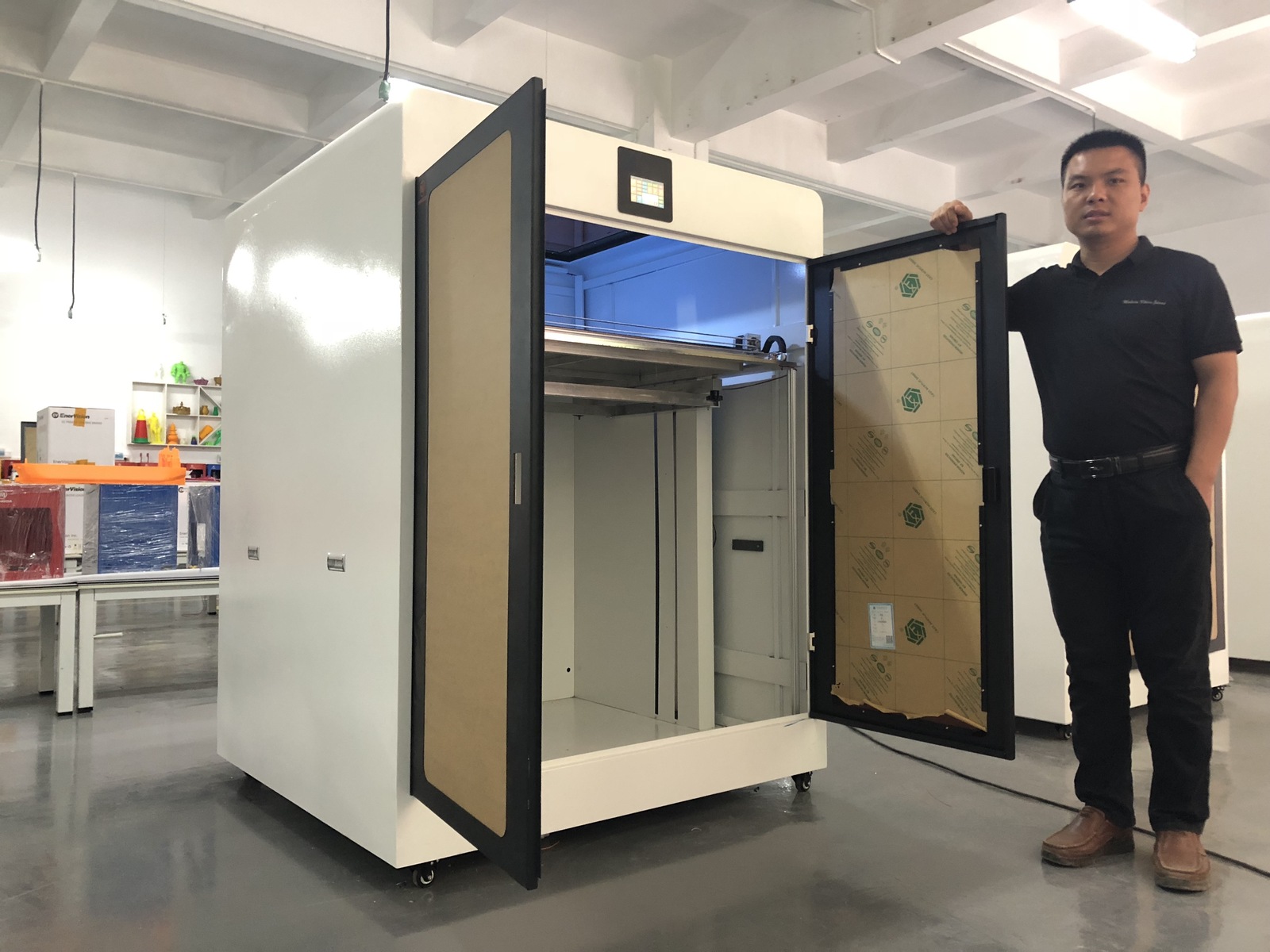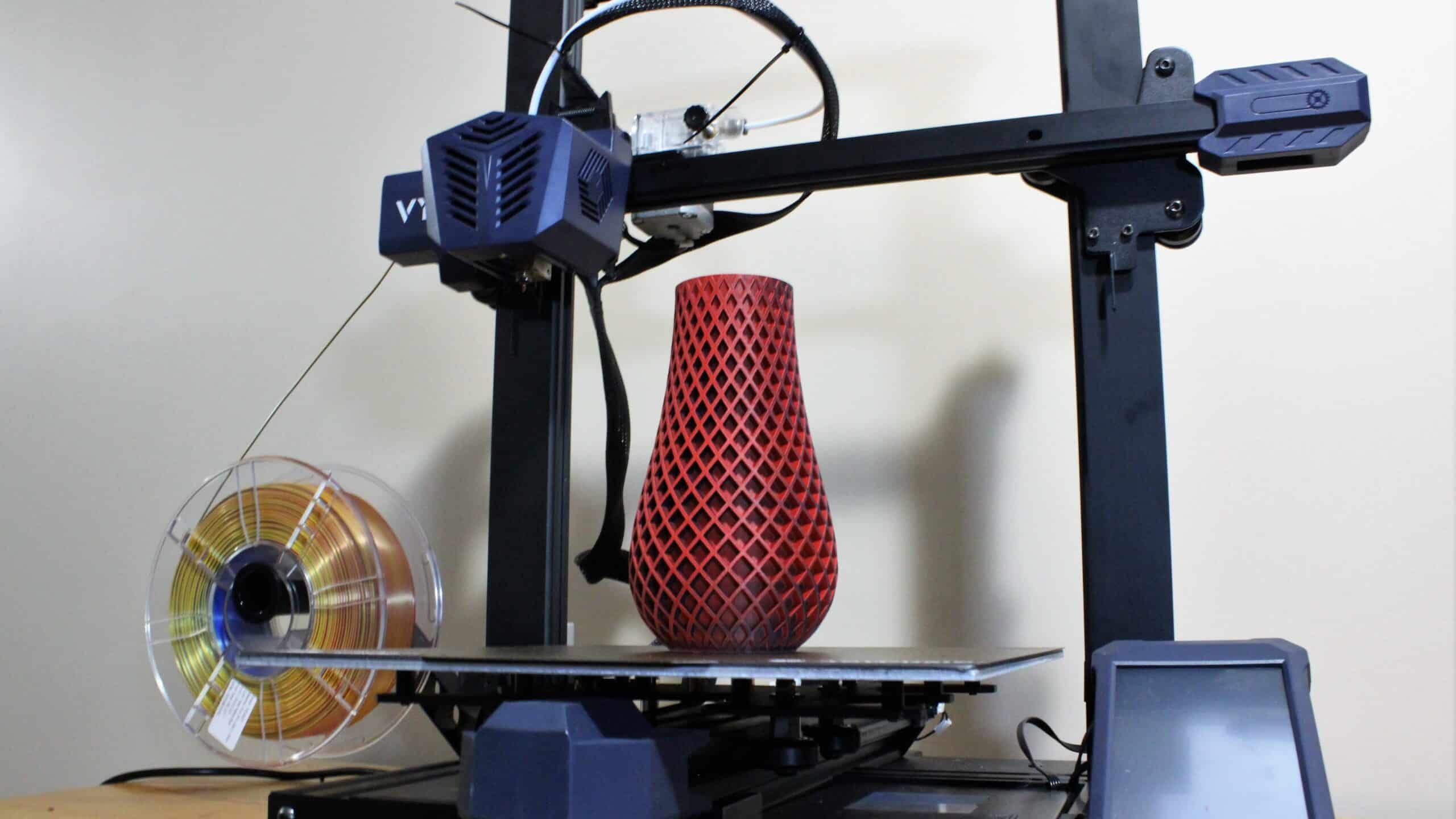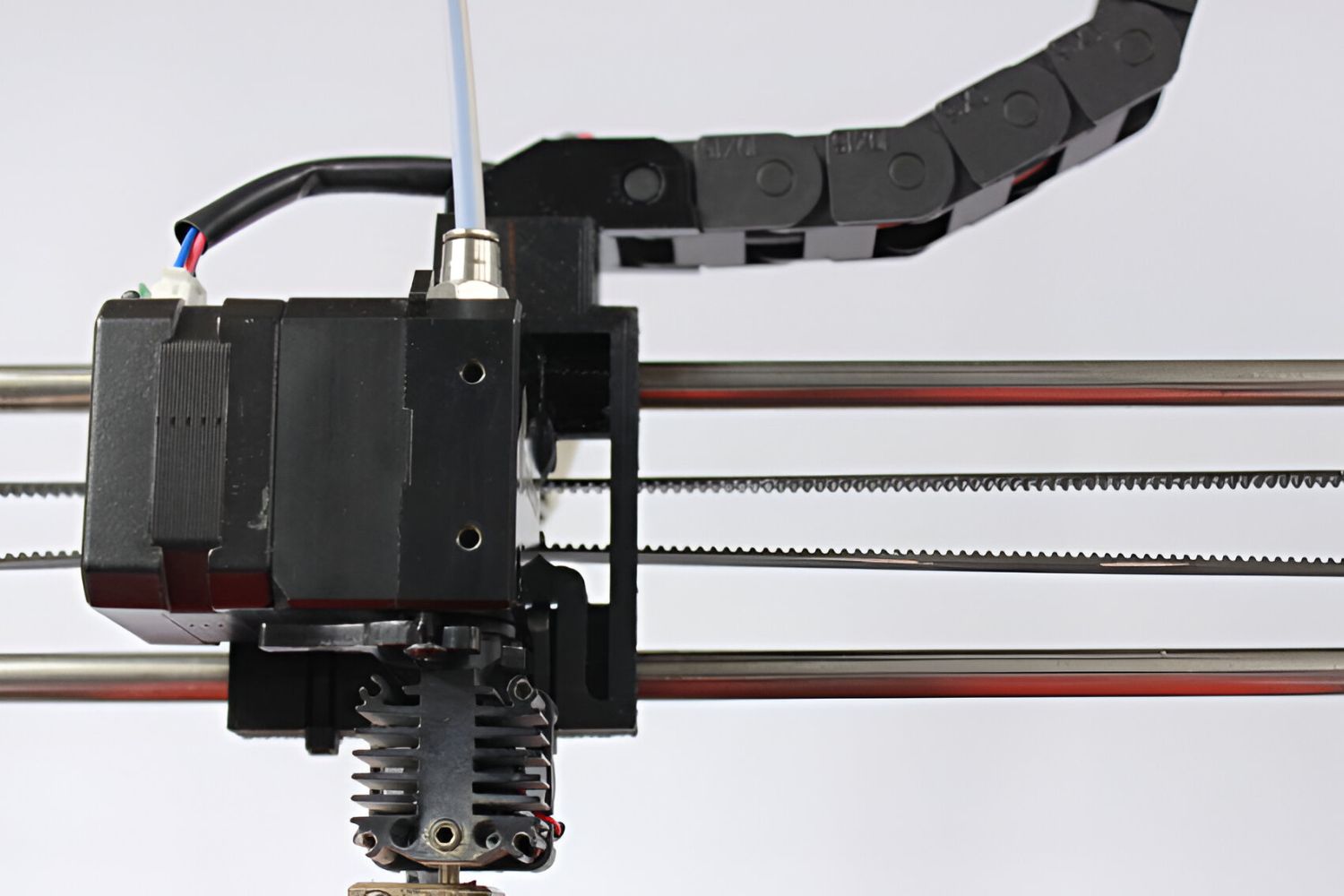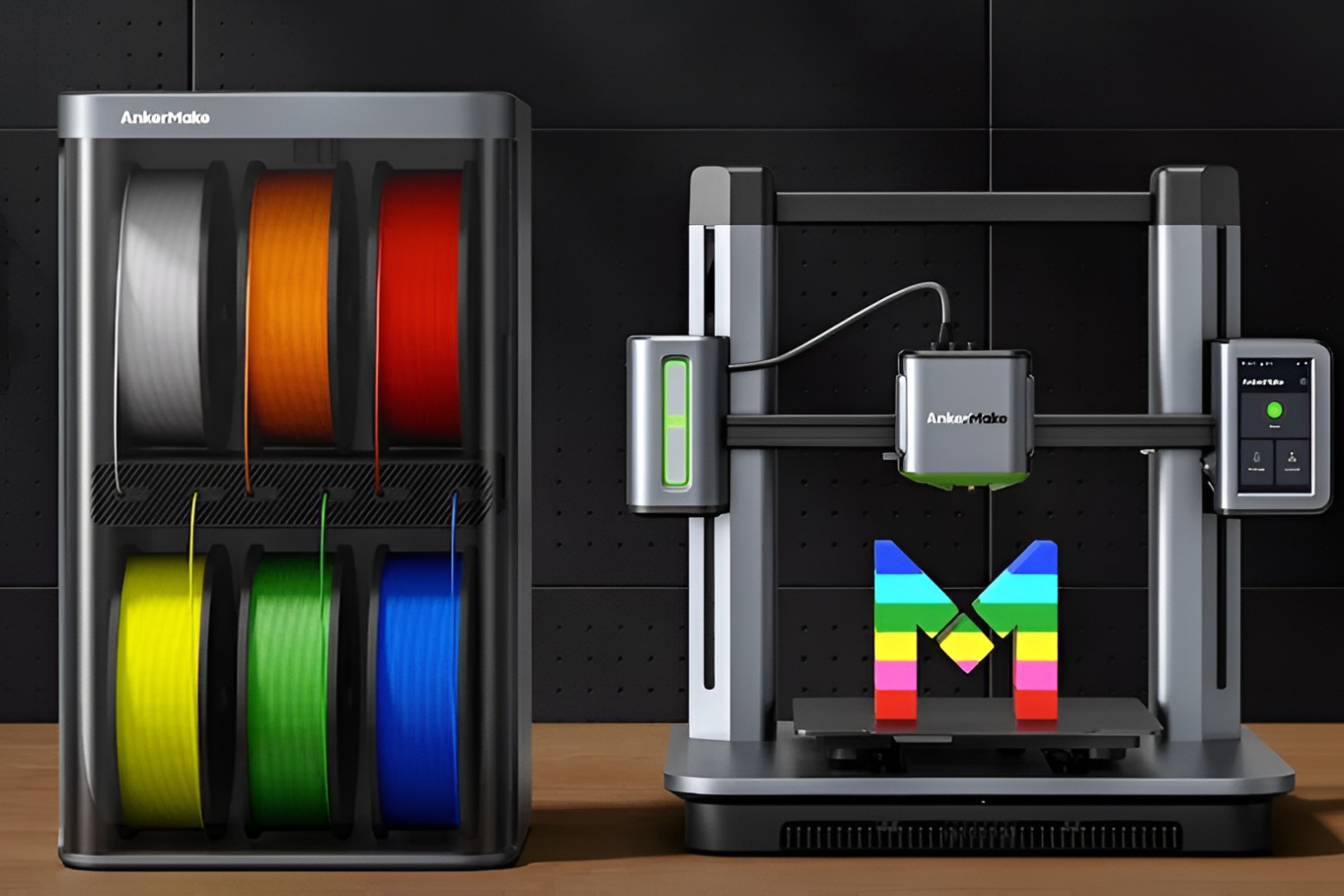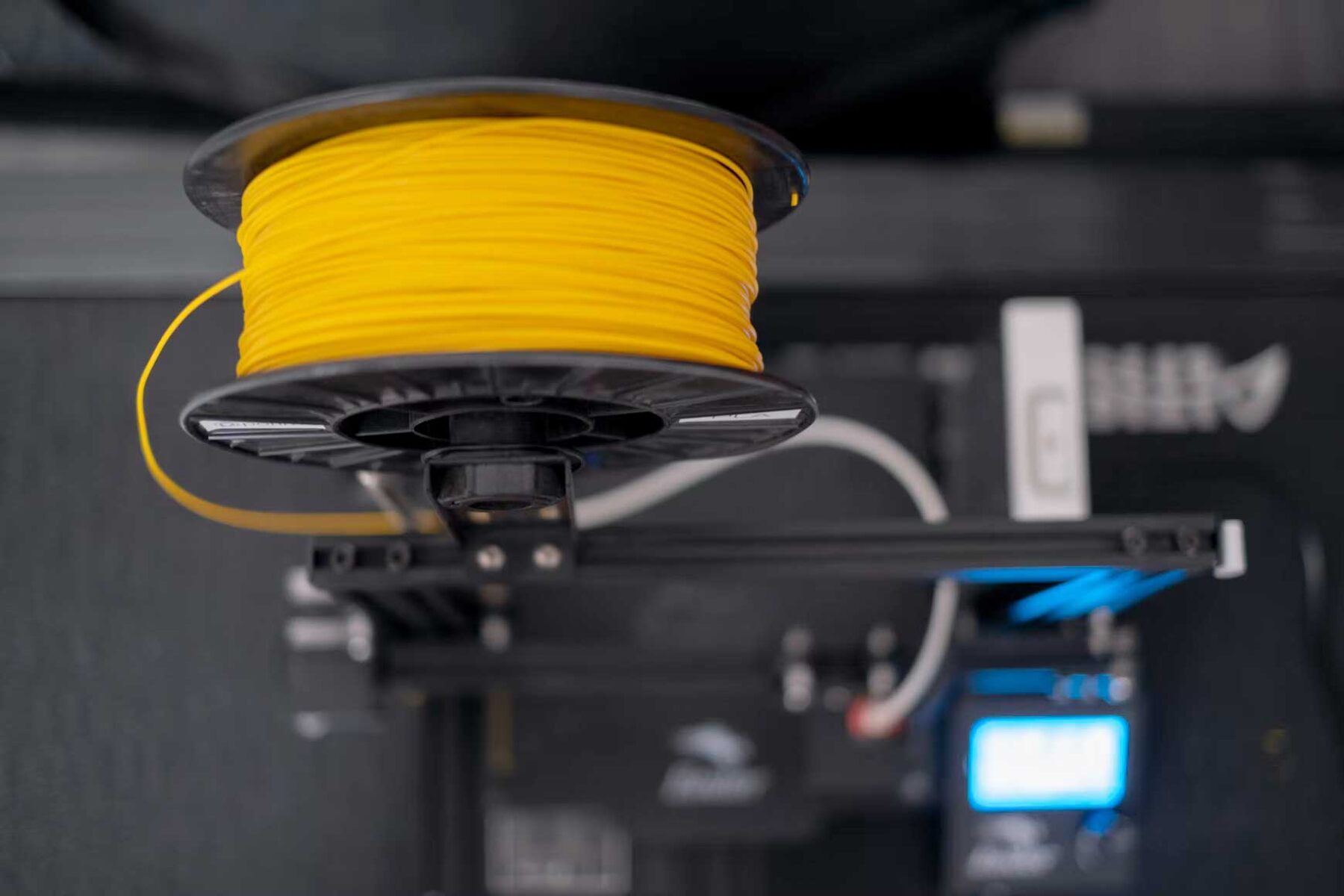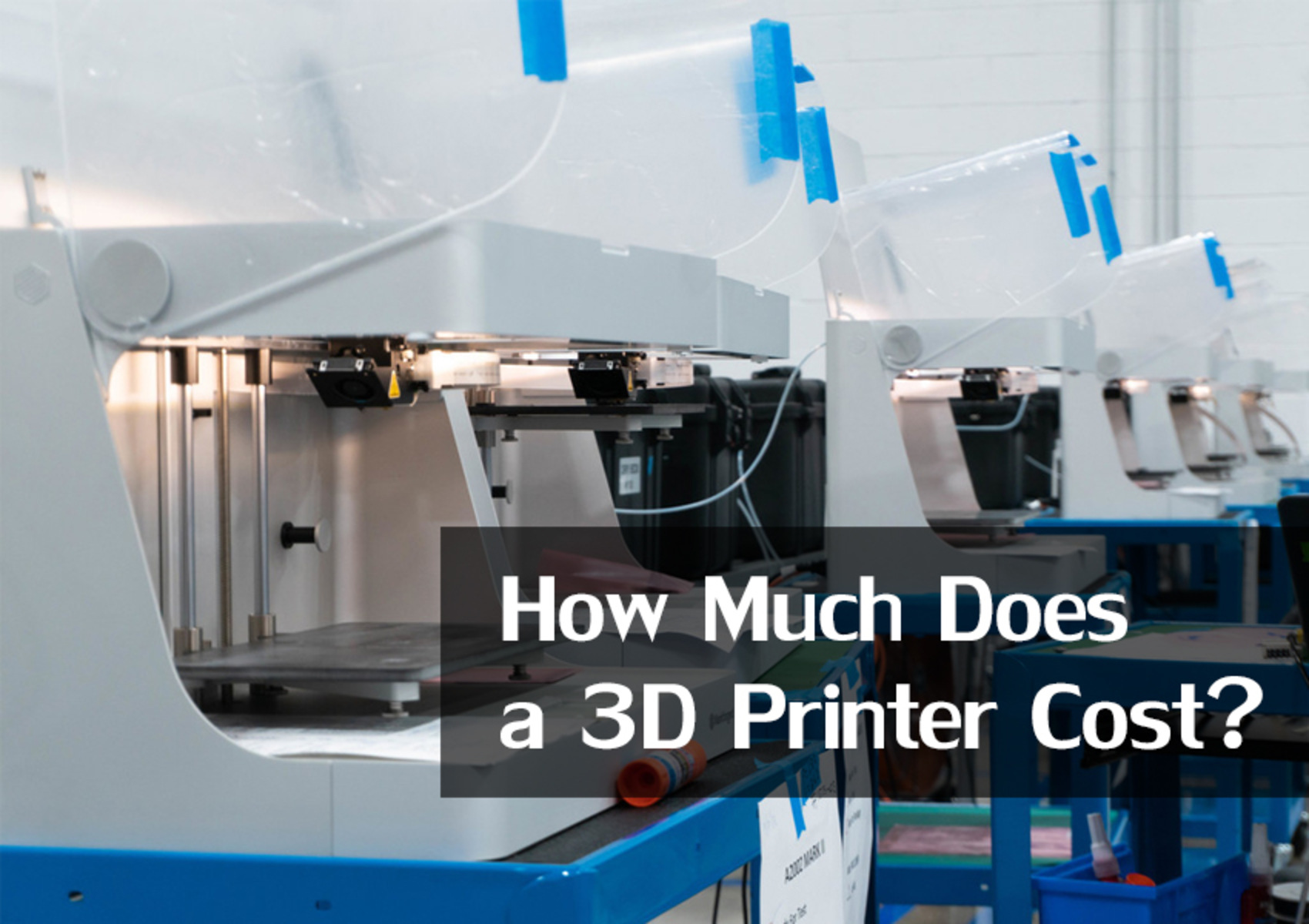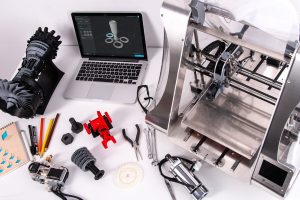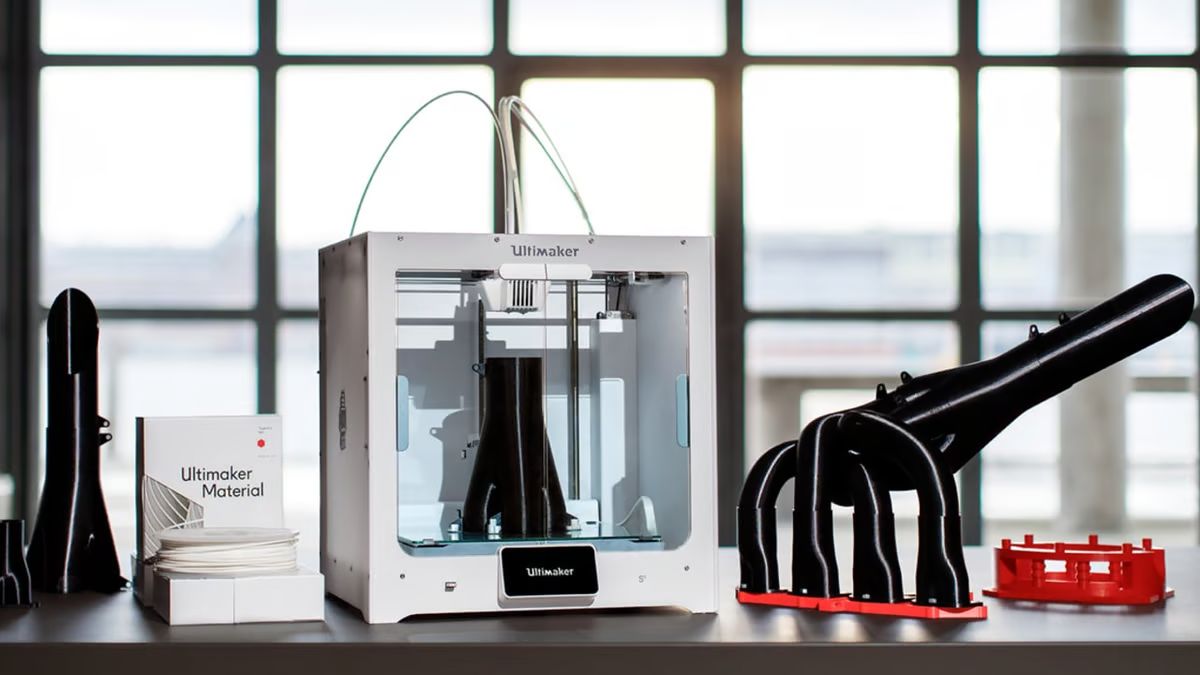Introduction
3D printing technology has revolutionized various industries, from manufacturing to healthcare and even hobbyist communities. With the ability to create three-dimensional objects layer by layer, 3D printers have become increasingly popular and accessible. Whether you’re a beginner looking to explore the possibilities or a professional seeking to enhance your production capabilities, investing in a 3D printing machine is a significant decision.
However, the price of a 3D printing machine can vary greatly depending on several factors. Understanding these factors is crucial in determining the right machine for your needs and budget. This article will explore the different types of 3D printing machines available and the price ranges associated with each. Additionally, we will discuss other costs to consider when buying a 3D printer and provide tips for finding the best deal.
Before delving into the specifics, it’s worth noting that 3D printing technology has come a long way in terms of affordability. In the past, owning a 3D printer was reserved for large corporations with significant budgets. However, advancements in technology and increased competition in the market have made 3D printing machines more accessible to individuals, small businesses, and educational institutions.
Whether you’re interested in creating intricate prototypes, personalized products, or artistic creations, there is a wide range of 3D printers available to suit different needs and budgets.
In the following sections, we will explore the factors that influence the price of a 3D printing machine, the different types available at various price points, and considerations when deciding between new and used machines. By the end, you’ll have a clearer understanding of the costs associated with 3D printers and be better equipped to make an informed decision.
Factors That Affect the Price of a 3D Printing Machine
When determining the price of a 3D printing machine, there are several key factors to consider. Understanding these factors will help you evaluate the value and suitability of a particular machine for your needs. Here are the primary factors that can influence the price:
- Build Volume: The build volume refers to the maximum size of the objects that the 3D printer can create. Machines with larger build volumes tend to be more expensive as they offer the flexibility to produce larger and more intricate designs.
- Printing Technology: There are various types of 3D printing technologies, including Fused Deposition Modeling (FDM), Stereolithography (SLA), Selective Laser Sintering (SLS), and more. Each technology has its own pros and cons, and the price can vary depending on the complexity and precision of the printing method.
- Print Quality: The resolution and accuracy of a 3D printer significantly impact the price. Machines that can produce finer details and smoother surfaces will generally come with a higher price tag.
- Printer Speed: Printing speed can vary among different machines. High-speed printers are often more expensive as they offer faster production times, making them ideal for commercial use where efficiency is crucial.
- Materials Compatibility: Some 3D printers are designed to work with a limited range of materials, while others offer versatility in terms of printable materials. Machines capable of printing with various materials such as ABS, PLA, nylon, and resin generally come at a higher cost.
- Build Quality and Durability: The construction quality and durability of the printer can affect its price. Machines made from sturdier materials and with superior build quality tend to be more expensive but offer a longer lifespan and better performance.
- Software and User Interface: User-friendly software and intuitive interfaces can enhance the 3D printing experience. Machines that come with advanced software and user-friendly interfaces might come at a higher price point, but they can streamline the design-to-print workflow and make the overall process more efficient.
- Brand and Reputation: Well-established brands with a reputation for quality and reliability often have higher-priced 3D printers. While brand reputation can contribute to a higher price, it also ensures that you are investing in a reliable and well-supported product.
It’s important to note that these factors are interconnected, and finding the right balance between them is crucial. Consider your specific needs, budget, and intended use of the 3D printer to determine which factors should take priority for you. By understanding these factors, you’ll be able to navigate the market and make a more informed decision when choosing a 3D printing machine.
Types of 3D Printing Machines and Their Prices
3D printing machines come in various types, each utilizing different technologies and catering to different applications. Understanding the different types and their associated price ranges will help you narrow down your options. Here are the main types of 3D printing machines and their corresponding prices:
- Fused Deposition Modeling (FDM) Printers: FDM printers are popular among hobbyists and entry-level users due to their affordability and ease of use. These printers melt thermoplastic filaments and extrude them layer by layer to create objects. Prices for FDM printers can range from around $200 for basic models to $3,000 for more advanced and feature-rich machines with larger build volumes and higher print quality.
- Stereolithography (SLA) Printers: SLA printers use a liquid resin that is cured with the help of a laser to create highly detailed and smooth objects. SLA printers are known for their exceptional print quality. Prices for SLA printers typically start around $500 and can go up to several thousand dollars for professional-grade machines with larger build volumes and advanced features.
- Selective Laser Sintering (SLS) Printers: SLS printers use a high-powered laser to sinter powdered materials, such as nylon or metal, layer by layer until the object is complete. SLS printers are typically used in industrial settings due to their high precision and ability to work with a wide range of materials. Prices for SLS printers can start at $5,000 and can reach up to hundreds of thousands of dollars for large-scale, industrial-grade machines.
- PolyJet Printers: PolyJet printers use inkjet technology to deposit layers of curable liquid photopolymers. These printers can produce highly detailed and multi-colored objects. PolyJet printers are commonly used in fields such as product design and architecture. Prices for PolyJet printers can range from a few thousand dollars for entry-level models to tens of thousands of dollars for professional-grade machines.
- Digital Light Processing (DLP) Printers: DLP printers use a projector to cure liquid resin layer by layer. They offer fast print speeds and high resolution. DLP printers are commonly used in industries such as jewelry making and dental applications. Prices for DLP printers can vary, starting from a few thousand dollars for consumer-grade machines and going up to tens of thousands of dollars for professional and industrial-grade models.
It’s important to note that these price ranges are approximate and can vary depending on factors such as build volume, print quality, speed, and additional features. It’s advisable to research specific models and compare their specifications and prices to find the best fit for your needs and budget. Additionally, it’s worth considering the overall value and long-term cost-effectiveness of a machine rather than solely focusing on its initial price.
By understanding the different types of 3D printing machines and their associated prices, you can make an informed decision on which type best suits your requirements and budget.
Entry-Level 3D Printers: Affordable Options for Beginners
If you’re new to 3D printing and looking for an affordable option to get started, entry-level 3D printers are a great choice. These printers are designed for beginners and offer a balance between affordability, ease of use, and basic functionality. Here are some features and examples of entry-level 3D printers:
Affordability: Entry-level 3D printers are typically priced in the range of $200 to $500, making them a budget-friendly option for those just starting their 3D printing journey.
User-Friendly: These machines are often equipped with intuitive interfaces and user-friendly software, making them easy to set up and operate even for those with no prior 3D printing experience.
Compact Size: Entry-level 3D printers are usually compact and portable, making them suitable for small spaces such as home offices, classrooms, or workshops.
Decent Print Quality: While entry-level machines may not offer the same level of precision and print quality as more advanced models, they still produce satisfactory results for basic projects and learning purposes.
Examples: Some popular entry-level 3D printers include the Creality Ender 3, Anycubic Mega-S, and Monoprice Maker Select V2. These printers offer good value for their price range, and there is a wealth of online resources and support available from the community.
Entry-level 3D printers are ideal for beginners who want to dip their toes into the world of 3D printing without breaking the bank. They are a great starting point to learn the basics of 3D printing, explore different materials, and experiment with various designs.
However, it’s important to keep in mind that entry-level printers may have limitations such as smaller build volumes, slower print speeds, or fewer advanced features. If you have specific requirements or foresee long-term usage, you may need to explore higher-priced options that offer more advanced capabilities.
Overall, entry-level 3D printers provide an accessible and cost-effective entry point into the world of 3D printing, allowing beginners to learn and explore the possibilities without a significant upfront investment.
Mid-Range 3D Printers: Striking a Balance Between Features and Cost
For those who have some experience with 3D printing and are looking for a more capable machine without breaking the bank, mid-range 3D printers offer a balanced combination of features and cost. These printers are suitable for both hobbyists and small businesses that require improved print quality, larger build volumes, and more advanced functionalities. Here are some key aspects of mid-range 3D printers:
Enhanced Print Quality: Mid-range 3D printers often offer improved print resolution and finer details compared to entry-level models. This allows for more intricate and higher-quality prints, making them suitable for projects that require greater precision.
Larger Build Volumes: Mid-range printers generally have larger build volumes, allowing you to create larger objects or print multiple smaller items simultaneously. This increased capacity expands the possibilities for your 3D printing projects.
Advanced Features: Mid-range machines often come equipped with additional features, such as touchscreen interfaces, filament run-out sensors, heated beds, and advanced material compatibility. These features offer more convenience, versatility, and customization options for your prints.
Improved Durability: Mid-range 3D printers tend to have sturdier constructions and better build quality than entry-level models. This results in greater durability and longer-lasting performance, ensuring that your investment continues to deliver reliable results over time.
Examples: Some popular mid-range 3D printers include the Prusa i3 MK3S, Creality CR-10S, and FlashForge Creator Pro. These printers offer a good balance between price and performance, and they are widely recommended by the 3D printing community.
Mid-range 3D printers strike a sweet spot between affordability and enhanced capabilities. They provide a solid upgrade from entry-level machines, offering superior print quality, larger build volumes, and advanced features, all at a reasonable price point.
However, it’s essential to consider your specific needs and budget before investing in a mid-range printer. Assess the features and functionalities that are most important to your projects and determine if the mid-range options align with your requirements. Additionally, consider factors such as available support, software compatibility, and the availability of spare parts when making your decision.
Overall, mid-range 3D printers offer an excellent balance between features, performance, and cost, making them a popular choice for hobbyists and small businesses seeking to take their 3D printing endeavors to the next level.
High-End 3D Printers: Top-of-the-Line Machines for Professionals
For professionals and businesses with demanding requirements, high-end 3D printers offer cutting-edge technology, exceptional print quality, and advanced features. These top-of-the-line machines are designed for industries such as engineering, aerospace, healthcare, and product design, where precision, speed, and reliability are paramount. Here are key characteristics of high-end 3D printers:
Unparalleled Print Quality: High-end 3D printers utilize the most advanced printing technologies and offer exceptional print resolutions and precision. They can produce intricate designs with ultra-fine details, delivering the highest levels of quality and accuracy.
Large Build Volumes: High-end printers often have significantly larger build volumes, enabling the production of larger-scale objects or multiple complex models simultaneously. This is particularly advantageous for industrial-scale production or prototyping.
Advanced Materials Compatibility: These machines are designed to work with a wide range of materials, including engineering-grade thermoplastics, carbon fiber composites, metals, ceramics, and more. The ability to print with diverse materials expands the possibilities for functional and durable applications.
Enhanced Speed and Efficiency: High-end printers are equipped with faster print speeds and advanced mechanisms to optimize production time and efficiency. These features are crucial for businesses that require rapid prototyping or mass production.
Robust Construction: High-end printers are built with durable, high-quality components to withstand continuous and demanding use. They are designed for long-term reliability, ensuring consistent performance even with high-volume production.
Examples: Some renowned high-end 3D printers include the Formlabs Form 3, Ultimaker S5, and Stratasys Fortus series. These printers are known for their industry-leading capabilities and are trusted by professionals across various sectors.
High-end 3D printers are a significant investment, typically ranging from a few thousand dollars to several hundred thousand dollars. They are targeted at professionals, businesses, and organizations that require the utmost precision, speed, and versatility in their 3D printing operations.
When considering a high-end 3D printer, it’s important to evaluate your specific needs and the return on investment it can provide. Factors such as the availability of technical support, material costs, and ongoing maintenance should be carefully considered.
Ultimately, high-end 3D printers offer professionals the tools they need to push the boundaries of innovation, create complex and functional objects, and stay ahead in their respective industries.
Used vs. New: Considering the Pros and Cons
When it comes to purchasing a 3D printing machine, one important decision is whether to buy a new printer or consider a used one. Both options have their advantages and disadvantages, and it’s essential to weigh them based on your specific needs and budget. Here are some pros and cons to consider when deciding between used and new 3D printers:
Used 3D Printers:
Pros:
- Lower Cost: Used 3D printers are typically available at a lower price compared to new machines, making them a more affordable option, especially for those with budget constraints.
- Value Retention: Some higher-end 3D printers, particularly those from established brands, retain their value well over time. By purchasing a used machine, you may acquire a higher-quality printer at a fraction of the original price.
- Availability of Upgrades: Used printers may already have upgraded components or modifications, which can enhance their performance and functionality. This can provide additional value at a lower cost.
Cons:
- No Warranty or Support: When buying a used printer, there is usually no warranty or support from the manufacturer. Any repairs or maintenance may be solely your responsibility.
- Potential Wear and Tear: Used printers may have experienced wear and tear, reducing their overall lifespan or requiring additional maintenance to keep them operational.
- Outdated Technology: Depending on the age of the printer, the technology may be outdated, lacking certain features or compatibility with newer software and materials.
New 3D Printers:
Pros:
- Warranty and Support: New printers often come with a warranty and technical support from the manufacturer, providing peace of mind and assistance if any issues arise.
- Updated Technology: Newer printers incorporate the latest advancements in 3D printing technology, offering improved performance, capabilities, and compatibility with the latest software and materials.
- Longer Lifespan: New machines typically have a longer lifespan compared to used ones, ensuring reliable and consistent performance over an extended period of time.
Cons:
- Higher Cost: New 3D printers are generally more expensive than used ones, which can be a limiting factor for those on a tight budget.
- Depreciation: Similar to any new technology, the value of a new printer depreciates rapidly once it is purchased.
Ultimately, the decision between used and new 3D printers depends on your budget, risk tolerance, and specific requirements. If you can find a well-maintained used printer from a reputable source, it can be a cost-effective option. However, if you prioritize the latest technology, warranty, and long-term reliability, investing in a new printer may be the more suitable choice.
Whichever option you choose, it’s important to thoroughly assess the condition and functionality of a used printer, and to research the reputation and reliability of the seller. When purchasing new, consider the specific features, performance, and compatibility requirements that align with your intended applications.
Additional Costs to Consider When Buying a 3D Printer
When purchasing a 3D printer, it’s essential to consider not only the initial cost of the machine itself but also the additional expenses that may arise throughout your 3D printing journey. Understanding these additional costs will help you budget appropriately and ensure a smooth and cost-effective experience. Here are some important factors to consider:
Consumables: One of the main ongoing costs with 3D printing is the consumables, such as filaments or resins. These materials can vary in price depending on the type and brand, so it’s important to factor in the cost of replenishing them as you plan your projects.
Additional Print Surfaces: Depending on the type of 3D printer, you may need to purchase additional print surfaces or build plates for better adhesion and easier removal of printed objects. These surfaces may eventually wear out and need replacement, so consider the long-term costs associated with them.
Upgrades and Accessories: You may want to enhance your 3D printing capabilities by investing in upgrades or accessories. This could include items like a dual extruder, a laser engraver, or a different nozzle size. Factor in the cost of these upgrades if they align with your needs and future projects.
Software and Design Tools: While there are free software options available for 3D printing, you may find it beneficial to invest in more advanced software or design tools. Consider the cost of software licenses or subscriptions that may be necessary for your specific printing requirements.
Maintenance and Repairs: Like any piece of machinery, 3D printers may require maintenance or occasional repairs. Consider the costs associated with routine upkeep, such as cleaning supplies and lubricants, as well as any potential repair costs that may arise throughout the lifespan of the printer.
Power and Consumable Usage: 3D printers consume electricity, and depending on your usage, this can add up over time. Additionally, some printers may require additional consumables such as cleaning agents or calibration tools, which should be factored into your ongoing expenses.
Training and Learning Resources: If you’re new to 3D printing or using a more advanced machine, you may need to invest in training or learning resources to familiarize yourself with the technology and maximize your printing capabilities. This includes the cost of books, online courses, or attending workshops or seminars.
By considering these additional costs, you can better plan and allocate your budget when buying a 3D printer. It’s important to have a clear understanding of the long-term expenses associated with 3D printing to ensure that you can sustain and maximize your investment.
Tips for Finding the Best Deal on a 3D Printing Machine
Investing in a 3D printing machine is a significant decision, and finding the best deal requires careful consideration of various factors. Here are some tips to help you find the most cost-effective and suitable 3D printing machine for your needs:
- Define Your Requirements: Before starting your search, clearly define your budget, intended applications, and desired features. Knowing exactly what you need will help you narrow down your options and focus on printers that meet your specific requirements.
- Research and Compare: Thoroughly research different brands, models, and technologies available in the market. Compare specifications, reviews, and prices to gain a comprehensive understanding of what each printer offers and its value for money.
- Consider Off-Season Sales and Promotions: Keep an eye out for off-season sales, holiday promotions, or special events where 3D printer manufacturers or reputable retailers may offer discounts or bundled deals. Planning your purchase around these times can help you secure a better deal.
- Consider Refurbished or Open Box Models: Look for refurbished or open box printers, which are typically offered at a discounted price compared to brand new models. These machines are often fully functional and have gone through thorough inspections or repairs by the manufacturer.
- Check for Local or Online Marketplaces: Explore local and online marketplaces where individuals or businesses may be selling their used 3D printers at a lower cost. Ensure you thoroughly assess the condition and functionality of the printer before making a purchase.
- Consult the 3D Printing Community: Engage with the 3D printing community through forums, online communities, or social media groups. Seek advice from experienced enthusiasts or professionals who can provide insights on the best value-for-money printers and guide you towards trustworthy sellers.
- Consider Long-Term Cost-Effectiveness: While upfront cost is important, also consider the long-term cost-effectiveness of the printer. Evaluate factors such as consumable costs, maintenance needs, and compatibility with readily available materials, as these can significantly impact the overall cost of owning and operating the printer.
- Check for Warranty and Customer Support: Ensure that the printer you’re considering comes with a warranty or reliable customer support. A warranty can provide added security and accessibility to assistance if any issues arise.
- Read and Understand the Terms and Conditions: Before finalizing your purchase, carefully read and understand the terms and conditions of the sale, including return policies, shipping costs, and any additional fees. This helps avoid any surprises or hidden costs that may arise later on.
By following these tips and being diligent in your research, you can increase your chances of finding the best deal on a 3D printing machine. Remember that finding the right balance between price, features, and long-term cost-effectiveness is key to making an informed and satisfying purchase.
Conclusion
Investing in a 3D printing machine requires careful consideration of various factors, including price, features, and long-term cost-effectiveness. Understanding the different types of 3D printers, the factors that influence their prices, and the additional costs associated with owning and operating them is crucial in making an informed decision.
Entry-level 3D printers provide an affordable and accessible starting point for beginners, allowing them to explore the basics of 3D printing without a significant upfront investment. Mid-range printers strike a balance between features and cost, offering improved print quality, larger build volumes, and advanced functionalities at a reasonable price. High-end printers cater to professionals and businesses that require top-of-the-line technology, unparalleled print quality, and advanced features for their demanding applications.
When deciding between used and new printers, consider the pros and cons of each option, weighing factors such as cost, warranty, support, and technology. Additionally, it’s important to consider the additional costs associated with owning a 3D printer, including consumables, upgrades, maintenance, and software.
To find the best deal on a 3D printing machine, define your requirements, thoroughly research and compare options, consider off-season promotions or refurbished models, consult the 3D printing community, and carefully assess warranty and support options. By following these tips, you can make an informed decision and find a 3D printer that meets both your needs and budget.
Remember, your 3D printer is an investment that can open up a world of possibilities, enabling you to bring your ideas to life and explore the realms of creativity and innovation. Choose wisely, and enjoy the exciting journey of 3D printing.







